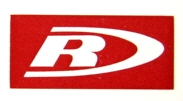 | |
| Company type | Private |
|---|---|
| Industry | Shipbuilding, ship repair, engine building, boilermaking |
| Founded | 1865 |
| Defunct | 1984 |
| Fate | Acquired |
| Successor | Swan Hunter |
| Headquarters | South Shields, UK |
John Readhead & Sons was a shipyard on the River Tyne in South Shields, Tyne and Wear, England founded in 1865.